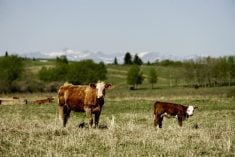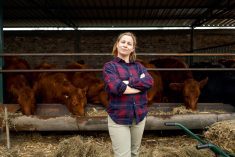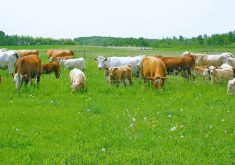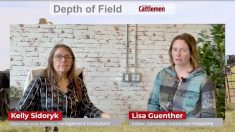I was never that good at physics. Does anyone remember studying ripple theory with those circular glass-bottomed pans? I broke one. My physics teacher was not happy.
Yet despite not being that great at physics, I acknowledge there are a number of natural laws that exist, such as Einstein’s theory of relativity and Newton’s laws of motion.
Read Also

Building demand together: The impact of Canada’s beef import levy
The beef import levy has become a central tool for ensuring balance in Canada’s beef industry
I recently came across a post on social media describing the five most famous laws in the world, but they deal with behaviour instead of physics.
Murphy’s Law (Revisited): The more you fear something, the more likely it is to occur. I thought this idea was more along the lines of if something can go wrong, it will. For example, if there is a gate left open, the cattle will find it. However, on our place, with all the electric fencing we do, our cattle are getting such a healthy respect for the wire that I have started having to coax them through the gates.
Kidlin’s Law: Once you write a problem down clearly and specifically, you’ve half-solved it. I think that if you are doing this with your fellow team members, you might be more than halfway to solving it. The first step in applying this law is to define the problem, clearly and concisely. The second step is to analyze the problem and break it into smaller parts. Third, generate potential solutions. Brainstorming can be helpful at this point, emphasizing creativity and generating as many ideas as possible.
The next step is to evaluate all the possibilities and shortlist the best ones. There are several ways to do this. In holistic management, we use the testing questions. One of these is the root cause question, which asks whether we are dealing with the root cause or just a symptom. Treating symptoms will not rectify the situation. Finally, it is time to implement a solution, with parameters for monitoring. This is also, an important aspect of holistic management.
Gilbert’s Law: When you take on a task, finding the best way to achieve the desired result is always your responsibility. In our family operations, we could and should be clearer on who is responsible for what. When undertaking projects or working with nature, it’s very likely that new challenges will develop along the way.
Wilson’s Law: If you prioritize knowledge and intelligence, money will follow. This seems like a great strategy. But more importantly, I think it is emphasizing the idea of continuous learning. We don’t know what we don’t know. As I have mentioned in other columns, being open to possibilities and other ways of looking at a situation is important. For example, think about the “six hats” theory of Edward de Bono. This idea also connects to the exploration of your own definition of wealth. I have led this exercise in many workshops over the years, helping people define or determine what kind of quality of life they truly desire. In many cases, it is about much more than actual dollars. Family, health, opportunities and freedom are just a few of the values I have seen emerge.
Falkland Law: If you don’t have to decide on something, then don’t decide. What is the extreme side of that — analysis paralysis or simply overthinking? There may be a fine line between this law and procrastination. Rather than making a wrong decision, wait until you are in a situation to make a better one. Like Kidlin’s law, there is value in analyzing the components of the decision, as well as taking time to reflect or, as I often like to say relative to our industry, ruminating.
As I write this, there are likely some decisions readers will need to make in their operations regarding livestock marketing. These will be heavily affected by market conditions and results of any tariffs. That is just one example where delaying a decision until there is more information can be a good strategy. Moisture conditions in spring 2025 are another example. If we get enough moisture to replenish sloughs and dugouts, plus support forage growth in the spring and beyond, then we won’t need to invest in more infrastructure.
This leads me to suggest having a backup plan. I’m not sure if that falls into one of the “law” categories above, but it probably should. I also recommend setting deadlines for making decisions. This is a strategy we have used when deciding whether to destock during droughts, after taking stock of forage inventory and determining how much we have ahead of us with no further precipitation. And if it is hot, I think we also need to take a shrink factor into account as the grass deteriorates.
It’s interesting to think about these laws and situations where we have experienced them.















